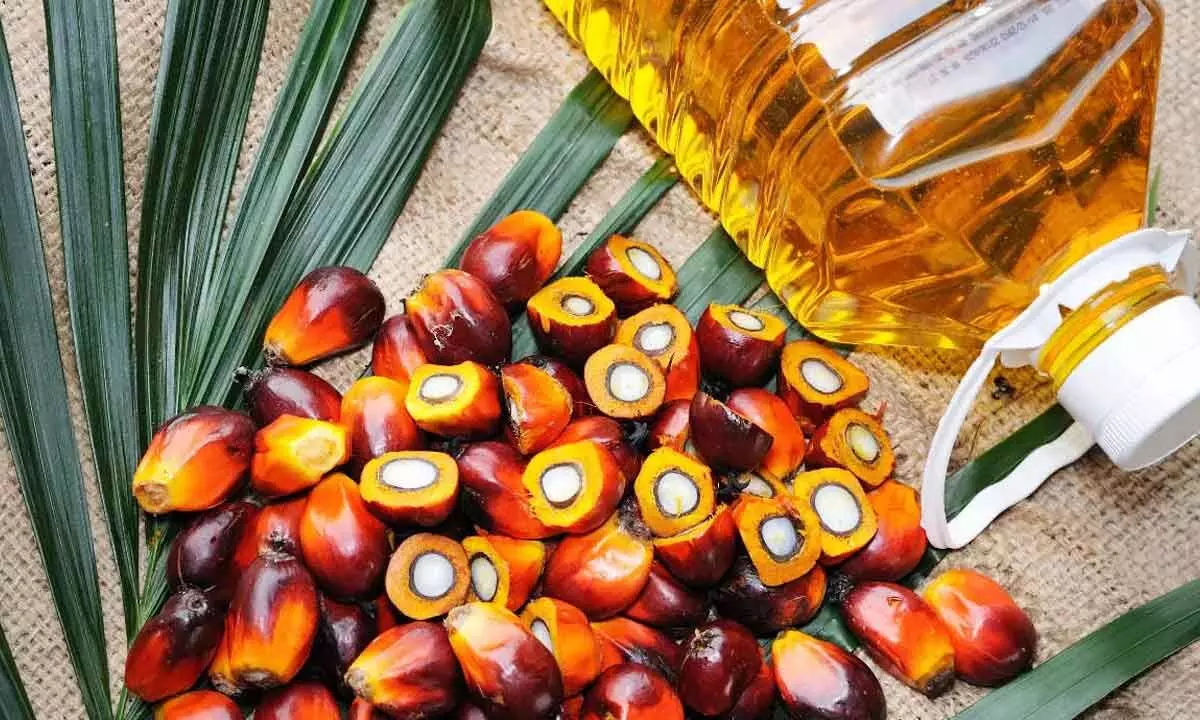Palm oil output in controlled spread ideal
Oil palm is a water-guzzling crop with a long gestation period: Icrier
image for illustrative purpose

Farmers need to realize remunerative prices to shift towards producing oil palm. The revision of the pricing formula by the CACP, which linked the market-based formula for fixing the price, could help farmers realize good returns, the Icrier report said
Atmanirbhar In Oil Production
- Experts favour institutional support to oil palm
- But suggest that it should be in limited manner
- India facing deficit of oilseeds
- Importing large edible oil imports of 13.4MT
New Delhi: Complete self-sufficiency or Atmanirbharta in palm oil production may not be a sustainable goal, as oil palm is a water-guzzling crop with a long gestation period, said a report by the Indian Council for Research on International Economic Relations (Icrier).
The Delhi-based think tank makes a case for self-sufficiency in oil production and even favors institutional support to oil palm, but it seems to suggest that this should be within limits. Shyma Jose and Ashok Gulati authored the report. Gulati was a member of the Economic Advisory Council of Prime Minister Atal Bihari Vajpayee and Chairman of the Commission for Agricultural Costs and Prices (CACP) (2011-14).
“Notably, the deficit of oilseeds in the food balance sheet in 2030 is worrisome for the country given the large edible oil imports as high as 13.4 million tonnes (including palm oil imports) during 2020-21,” the report said. “A technological breakthrough in oilseeds would increase productivity or area expansion. These are two possible solutions to improve oilseeds’ balance sheet in the long run,” it added.
Farmers need to realize remunerative prices to shift towards producing oil palm. The revision of the pricing formula by the CACP, which linked the market-based formula for fixing the price, could help farmers realize good returns, the Icrier report said.
Further, the fresh fruit bunches of oil palm are perishable and require processing within 24 hours. Initiatives that incentivise private investments or public-private partnership for agro-processing facilities need to be prioritised for oil palm, the report added.
The share of palm oil is about 56 per cent of edible oil imports, followed by soybean oil at 27 per cent and sunflower at 16 per cent. To increase the area under the oil palm and improve its production, it has been making efforts through various schemes and programmes.
In 2014-15, the National Mission on Oilseeds and Oil Palm (NMOOP) proposed to increase the production of vegetable oils from the oilseeds and oil palm. At present, this scheme is being implemented through the National Food Security Mission (Oilseeds) and National Food Security Mission (Oil Palm), respectively.
Recently, the government has announced a new scheme, the National Mission on Edible Oils-Oil Palm, with an investment of Rs11,040 crore to promote the cultivation of oil palm and increase production to reach 1 million tonnes by 2025-26, thereby, reducing dependence on edible oils imports.

